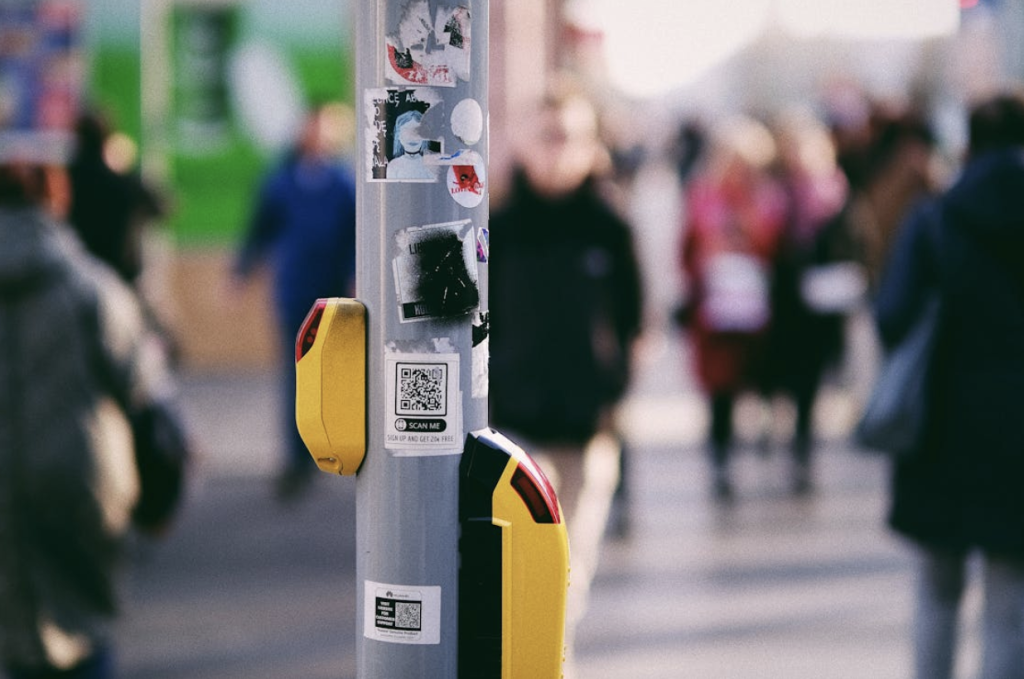As self-driving cars inch closer to becoming a mainstream reality, the need for robust communication systems between these vehicles and their surroundings becomes increasingly critical. One innovative solution that is gaining attention is the use of QR codes. By integrating QR codes into the infrastructure, self-driving cars can enhance their navigation and interaction capabilities. Utilizing a free QR generator, developers and urban planners can create a network of QR codes that facilitate seamless communication between autonomous vehicles and their environment.
Source: https://www.pexels.com/uk-ua/photo/11692254/
Enhancing Navigation and Safety
Self-driving cars rely heavily on sensors, cameras, and GPS for navigation. However, these systems can sometimes face limitations, especially in complex urban environments. QR codes can serve as supplementary markers, providing precise information about location, road conditions, and traffic signals. By scanning QR codes embedded in road signs, traffic lights, and even road surfaces, self-driving cars can receive up-to-date data that helps them navigate more accurately and safely.
For instance, QR codes on road signs can contain detailed information about upcoming roadworks, detours, or changes in traffic patterns. When a self-driving car scans these codes, it can adjust its route and speed accordingly, minimizing disruptions and enhancing overall traffic flow. Similarly, QR codes at intersections can provide real-time updates about traffic light cycles, helping autonomous vehicles optimize their stopping and starting times to reduce congestion and improve fuel efficiency.
Facilitating Vehicle-to-Infrastructure Communication
The integration of QR codes into transportation infrastructure can significantly enhance vehicle-to-infrastructure (V2I) communication. Here are a few ways QR codes can be utilized:
- Dynamic Parking Information: QR codes in parking lots can provide real-time information about available spaces, parking fees, and restrictions. Self-driving cars can scan these codes to find and reserve parking spots efficiently.
- Emergency Response Coordination: In the event of an accident or road hazard, QR codes placed at strategic locations can relay critical information to self-driving cars, enabling them to reroute and avoid dangerous areas.
- Public Transportation Integration: QR codes at bus stops and train stations can provide self-driving cars with schedules, routes, and real-time updates, facilitating seamless integration between different modes of transportation.
Additionally, these QR codes can be regularly updated to reflect the latest information, ensuring that self-driving cars always have access to accurate data. This real-time adaptability is crucial in dynamic urban environments where conditions can change rapidly. Moreover, the use of QR codes can be expanded to include information on electric vehicle (EV) charging stations, helping self-driving EVs locate and utilize these facilities efficiently. This comprehensive approach to using QR codes can significantly contribute to the overall functionality and reliability of autonomous vehicle systems.
Improving Passenger Experience
QR codes can also enhance the passenger experience in self-driving cars. For example, QR codes inside the vehicle can link passengers to information about their journey, such as estimated arrival times, route details, and points of interest along the way. This can be particularly useful for tourists in unfamiliar cities, offering them a personalized and informative travel experience. By providing detailed information and interactive maps, QR codes help tourists make the most of their trip, ensuring they don’t miss important landmarks and attractions.
Moreover, QR codes can be used to facilitate seamless transactions and services within the car. Passengers can scan QR codes to access entertainment options, order food and beverages, or even make payments for ride fares. This level of interactivity not only improves convenience but also adds a layer of personalization to the travel experience. For business travelers, QR codes can link to productivity tools, allowing them to access work documents, attend virtual meetings, or book appointments directly from their car. This integration of services makes the journey more productive and enjoyable, catering to the diverse needs of modern passengers.
Modern Challenges for QR Codes
While the integration of QR codes into self-driving car technology holds great promise, there are several challenges that need to be addressed. One major challenge is ensuring the durability and visibility of QR codes in different environmental conditions. QR codes must be resistant to weather, wear and tear, and vandalism to remain functional over time.
Another consideration is the need for standardized protocols and rules. To ensure consistent communication between self-driving cars and infrastructure, it is important to establish uniform standards for the design, placement and encoding of QR code data. This requires collaboration between car manufacturers, city planners and regulators.
Thus, the potential of QR codes to enhance the capabilities of self-driving cars is huge and promising. By providing a reliable and efficient means of communication between vehicles and the environment, QR codes can significantly improve navigation, safety and the overall passenger experience. As autonomous vehicle technology continues to advance, the integration of QR codes into transportation infrastructure could play a critical role in shaping the future of smart, connected cities.
For those who want to explore the implementation of QR codes in self-driving car technology, ME-QR offers convenient solutions for creating and managing QR codes. Using this service, developers and city planners can ensure the implementation of various projects, paving the way for a new era of intelligent transport systems.
